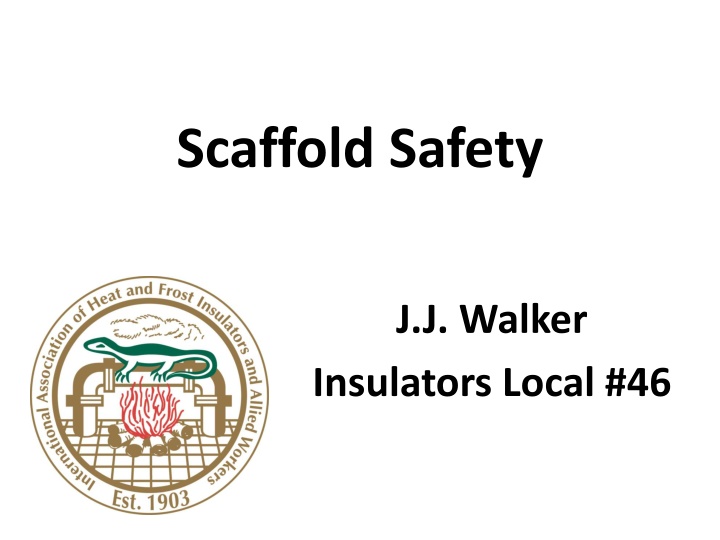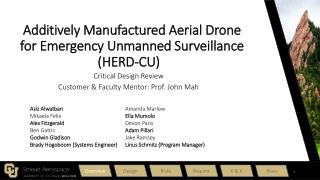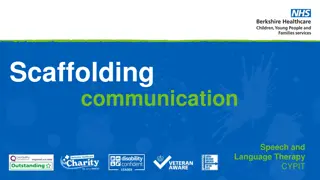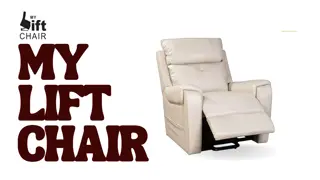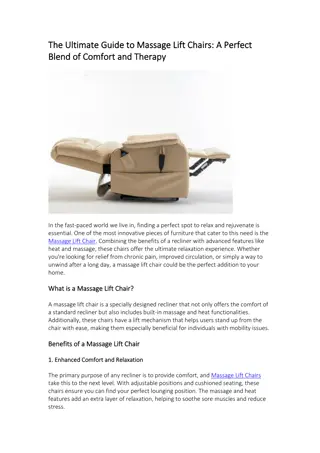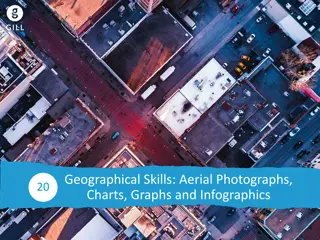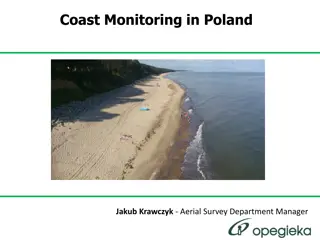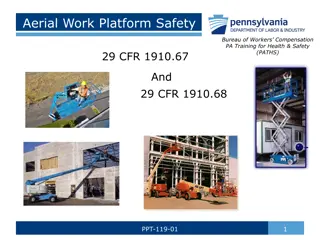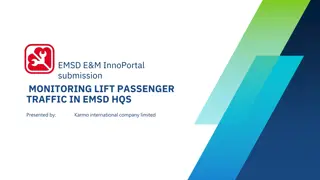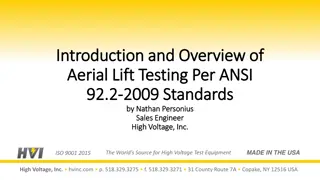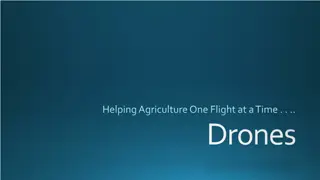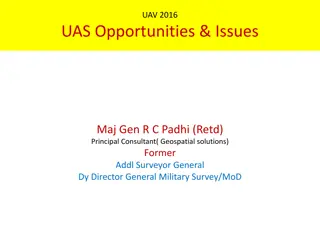Comprehensive Guide to Scaffolds and Aerial Lift Safety
Explore different types of scaffolds like pole, tube and coupler, needle beam, and two-point adjustable scaffolds. Learn about aerial lifts, hazards associated with them, and safety measures to prevent injuries. Stay informed to ensure construction site safety.
Download Presentation

Please find below an Image/Link to download the presentation.
The content on the website is provided AS IS for your information and personal use only. It may not be sold, licensed, or shared on other websites without obtaining consent from the author.If you encounter any issues during the download, it is possible that the publisher has removed the file from their server.
You are allowed to download the files provided on this website for personal or commercial use, subject to the condition that they are used lawfully. All files are the property of their respective owners.
The content on the website is provided AS IS for your information and personal use only. It may not be sold, licensed, or shared on other websites without obtaining consent from the author.
E N D
Presentation Transcript
Scaffold Safety J.J. Walker Insulators Local #46
SCAFFOLDS OSHA Construction Standard 1926 Subpart L AERIAL LIFTS 1926.453
Types of Scaffolds Supported -pole, tube and coupler, fabricated frame Suspension -needle beam, one-point and two-point adjustable scaffolds Aerial -vertical tower, extendable and articulating boom platforms
Pole Scaffold Pole scaffolds are a type of supported scaffold in which every structural component, from uprights to braces to platforms, is made of wood.
Tube and Coupler Scaffold Tube and coupler scaffolds are so-named because they are built from tubing connected by coupling devices.
Needle Beam Scaffold This simple type of scaffold consists of a platform suspended from needle beams, usually attached on one end to a permanent structural member.
Two-Point Adjustable Scaffold Hung by ropes or cables connected to stirrups at each end of the platform.
Vertical Tower (Scissor Lift)
AERIAL LIFTS An aerial lift is any vehicle-mounted device used to elevate personnel, including: Extendable boom platforms Aerial ladders Articulating (jointed) boom platforms Vertical towers
MANY WORKERS ARE INJURED OR KILLED ON AERIAL LIFTS EACH YEAR. Hazards Associated with Aerial Lifts Fall from elevated level Objects falling from lifts Tip-overs Ejections from the lift platform Structural failures (collapses) Electric shock (electrocutions) Entanglement hazards Contact with objects Contact with ceilings and other overhead objects
Over a one-year period, OSHA investigated ten preventable fatalities and more than 20 preventable injuries resulting from a variety of incidents involving scissor lifts. OSHA s investigations found that most injuries and fatalities involving scissor lifts were the result of employers not addressing: Fall Protection, Stabilization and Positioning
TRAINING Only trained and authorized persons are allowed to operate an aerial lift. Training should include: Explanations of electrical, fall, and falling object hazards Procedures for dealing with hazards Recognizing and avoiding unsafe conditions in the work setting Instructions for correct operation of the lift (including maximum intended load and load capacity) Demonstrations of the skills and knowledge needed to operate an aerial lift before operating it on the job When and how to perform inspections Manufacturer's requirements
RETRAINING Workers should be retrained if any of the following conditions occur: An accident occurs during aerial lift use Workplace hazards involving an aerial lift are discovered A different type of aerial lift is used Employers are also required to retrain workers who they observe operating an aerial lift improperly.
BEFORE OPERATING AN AERIAL LIFT Prior to each work shift, conduct a pre-job inspection to verify that the equipment and all its components are in safe operating condition. Follow the manufacturer's recommendations and include a check of: Vehicle components Proper fluid levels (oil, hydraulic, fuel and coolant) Leaks of fluids Wheels and tires Battery and charger Lower-level controls Horn, gauges, lights and backup alarms Steering and brakes
Lift components Operating and emergency controls Personal protective devices Hydraulic, air, pneumatic, fuel and electrical systems Fiberglass and other insulating components Missing or unreadable placards, warnings, or operational, instructional and control markings Mechanical fasteners and locking pins Cable and wiring harnesses Outriggers, stabilizers and other structures Loose or missing parts Guardrail systems Do not operate any aerial lift if any of these components are defective until it is repaired by a qualified person. Remove defective aerial lifts from service (tag out) until repairs are made.
WORK ZONE INSPECTION Employers must assure that work zones are inspected for hazards and take corrective actions to eliminate such hazards before and during operation of an aerial lift. Items to look for include: Drop-offs, holes, or unstable surfaces such as loose dirt Inadequate ceiling heights Slopes, ditches, or bumps Debris and floor obstructions Overhead electric power lines and communication cables Other overhead obstructions Other hazardous locations and atmospheres High wind and other severe weather conditions, such as ice The presence of others in close proximity to the work
WHILE OPERATING AN AERIAL LIFT Fall Protection: Ensure that access gates or openings are closed Stand firmly on the floor of the bucket or lift platform Do not climb on or lean over guardrails or handrails Do not use planks, ladders, or other devices as a working position Use a body harness or a restraining belt with a lanyard attached to the boom or bucket Do not belt-off to adjacent structures or poles while in the bucket
OPERATION/TRAVELING/LOADING Do not exceed the load-capacity limits. Take the combined weight of the worker(s), tools and materials into account when calculating the load Do not use the aerial lift as a crane Do not carry objects larger than the platform Do not drive with the lift platform raised (unless the manufacturer s instructions allow this) Do not operate lower level controls unless permission is obtained from the worker(s) in the lift (except in emergencies) Do not exceed vertical or horizontal reach limits Do not operate an aerial lift in high winds above those recommended by the manufacturer Do not override hydraulic, mechanical, or electrical safety devices
OVERHEAD PROTECTION Be aware of overhead clearance and overhead objects, including ceilings Do not position aerial lifts between overhead hazards if possible Treat all overhead power lines and communication cables as energized, and stay at least 10 feet (3 meters) away Ensure that the power utility or power line workers de-energize power lines in the vicinity of the work
Stability in the Work Zone: Set outriggers on pads or on a level, solid surface Set brakes when outriggers are used Use wheel chocks on sloped surfaces when it is safe to do so Set up work zone warnings, such as cones and signs, when necessary to warn others Insulated aerial lifts offer protection from electric shock and electrocution by isolating you from electrical ground. However, an insulated aerial lift does not protect you if there is another path to ground (for instance, if you touch another wire). To maintain the effectiveness of the insulating device, do not drill holes in the bucket.
